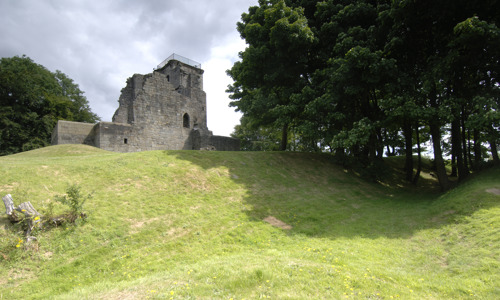History
On top of the prominent hill at Dundonald sits a stone castle built around 1371. Its first owner was Robert II, grandson of Robert the Bruce and founder of the Stewart royal dynasty. He built the castle soon after he came to the throne, and died there in 1390.
The castle continued to serve as a noble residence – but generally not a royal one – until the 1590s. By this date the then lairds, the Wallaces of Dundonald, had moved to nearby Auchans Castle.
Robert II wasn’t the first to build a castle on the hill, however. His ancestor, Walter, Steward of Scotland, built the earliest castle there in the mid-1100s. And archaeologists have discovered signs of settlement from even long before then.
Evidence includes:
- pottery kilns dating from the late Bronze Age
- significant signs of a hill fort, with round timber buildings, dating from the Iron Age
The fort of Donald
In the late 1st millennium AD, the hill fort grew into a complex, with straight-sided buildings enclosed by a drystone rampart.
Dundonald, ‘fort of Donald’, may refer to a king called Dyfnwal (Donald) who ruled this part of Strathclyde. There were at least four kings of Strathclyde named Donald in the 9th and 10th centuries.
The House of Stewart
There is scarcely any trace left of either of the two castles built between the mid-1100s and 1371.
A mighty stone castle built around 1260 replaced the first castle of earthwork and timber. The newer fortress was kite-shaped on plan, with two twin-towered gatehouses. An area of the west gatehouse is still visibly part of the present castle. The well in the east gatehouse can still be seen on walking up the steep hill.
Alexander, the 4th Steward, probably built the castle, which suffered badly during the Wars of Independence with England.
The present castle is a huge tower house, three storeys high. The west face has armorial stones of the Stewarts and the Royal house. Unusually, the tower housed two feasting halls, one above the other, over ground-floor storage. The upper hall was probably for more private use by the king.
The castle was extended to the south in the 14th century, possibly to provide more private accommodation for its royal occupants.














